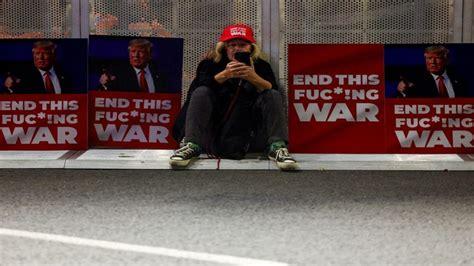
Will hostages be released, what about Yayha Sinwar’s body? Inside Israel-Hamas ceasefire deal
Will Tuesday (January 14) finally be the day that we see a halt to the Gaza war with Israel and Hamas signing off on a ceasefire deal? If all goes as planned then a Gaza ceasefire deal could be announced as early as today.
This new and positive development comes as US and Qatari mediators have worked overtime to draw up a proposal that would appease both sides — Israel as well as Hamas. It also comes just days before incoming US President Donald Trump will take the oath of office on January 20.
But what’s in the proposal? What are the terms for a ceasefire deal? And will both sides, Israel and Hamas, accept the terms laid down in the proposal? Here’s what we found out so far.
What’s in the Israel-Hamas ceasefire deal?
The basic framework of the deal includes an exchange of Israeli hostages for Palestinian prisoners and a six-week ceasefire. During that time, there would be some Israeli troop withdrawals from Gaza, and more negotiations to try to reach more hostage-prisoner swaps and a final end to the war.
Release of hostages
According to officials involved in the making of the ceasefire deal said that in the first phase of this agreement, Hamas would release a group of 33 Israeli hostages, living and dead, including women, older men and hostages with illnesses. Israel had requested their release.
If this stage is carried out, then on the 16th day since the deal took effect, Israel will begin negotiations on a second stage to free the remaining captives — male soldiers and men of military age — and the bodies of slain hostages.
It is said that of the 251 taken hostage by Hamas on October 7, 94 remain in Gaza, including the bodies of at least 34 confirmed dead by the Israel Defense Forces.
However, Israel has made it clear that it would not return the body of Yahya Sinwar, the brains of Hamas’ October 7 invasion, who was killed by Israeli troops in Rafah last October. This comes after it was reported that Hamas was demanding the body of its former leader in the first stage of the deal. “It will not happen. Period,” the official said in a statement, as per a Times of Israel report.
Withdrawing troops
The ceasefire deal also has provisions for troop withdrawal. Under the complete ceasefire agreement, Israel will withdraw from most areas of the Gaza Strip and release large numbers of Palestinian security prisoners.
There would be security arrangements at the Philadelphi corridor, along the southern edge of Gaza, with Israel withdrawing from parts of it after the first few days of the deal.
The deal also calls for unarmed North Gaza residents to return home. However, there will be a mechanism put in place to ensure that no weapons are there. Israeli troops would also withdraw from the Netzarim corridor in central Gaza.
Providing aid
The draft proposal for a ceasefire between Israel and Hamas also includes humanitarian aid. The draft calls for an increase in humanitarian aid supplied to the Gaza Strip where thousands and millions are on the verge of death.
Governance of Gaza
The future of Gaza remains unknown as the draft has provided no language on who will govern it. Israel has said that Hamas can play no role in the governance of Gaza and also rejected the Palestinian Authority’s power. The Jewish nation has also said that it would retain security control over the enclave after the fighting ends.
The international community has said that Gaza must be run by Palestinians but efforts to find alternatives to the main factions among civil society or clan leaders have proved largely fruitless.
What do the leaders say about the deal?
As the ceasefire deal seems to be almost done, US President Joe Biden on Monday (January 13) said, “I have learned from my many years of public service to never, never, never, ever give up.
“The deal we have structured would free the hostages, halt the fighting, provide security to Israel, and allow us to significantly surge humanitarian assistance to the Palestinians who suffered terribly in this war that Hamas started,” Biden said.
Even US national security adviser, Jake Sullivan, echoed similar sentiments. “We are close to a deal, and it can get done this week. I am not making a promise or prediction but it is there for the taking and we are going to work to make it happen,” Sullivan said at a briefing at the White House on Monday. “I think there’s a good chance we can close this,” he added.
A Hamas official also confirmed that progress had been made on all issues and that a deal was possible in the coming two days as long as Israel did not change its position at the last minute.
However, in Israel, not everyone seemed to be keen on the terms laid down in the ceasefire deal. Bezalel Smotrich, a far-right member of Israeli Prime Minister Benjamin Netanyahu’s ruling coalition, decried the emerging deal as a “catastrophe for the national security of the state of Israel”.
“We will not be part of a surrender deal that would include releasing terrorist hostages, stopping the war and dissolving its achievements that were bought with much blood, and abandoning many hostages,” Smotrich wrote on X.
“This is the time to continue with all our might, to occupy and cleanse the entire Strip, to finally take control of humanitarian aid from Hamas, and to open the gates of hell on Gaza until Hamas surrenders completely and all the hostages are returned.”
Will the Gaza ceasefire deal hold?
The US, Qatar and Egypt moderators who have been working hard at trying to piece together this deal are hopeful that Israel and Hamas would adhere to the terms, bringing an end to the hostilities between the two.
However, it is yet to be seen if the deal is accepted by both sides and then adhered to. As former Israeli intelligence official Avi Melamed told CNN that even if a deal were reached, the continued presence of the Israeli military and Hamas in Gaza during the first phase of its implementation could risk reigniting hostilities. “That part is very sensitive because it could potentially have the seeds that result in – at some point for whatever the reason – reignition or flares of fighting in Gaza. It’s not to say necessarily that that will happen, but it’s something that could happen and we should take it into consideration,” he said.
There’s also the fact that neither party, Israel nor Hamas, have agreed on the demand to end the war. The Benjamin Netanyahu-led country wants the deal to have enough space for the resumption of fighting. Analysts believe this is because Netanyahu fears that his right-wing coalition partners could take down his government and jeopardise his political future if he agrees to a deal that ends the war.
However, both sides seem to want to sign off on the deal before Trump’s inauguration on January 20. Earlier, the US president-elect had said there would be “hell to pay” unless hostages held by Hamas were freed by the date he came to power.
Alon Pinkas, former Israeli ambassador and government adviser, speaking to Al Jazeera said that “a very similar deal was discussed eight months ago too, but at the time Netanyahu refused to budge. However, as per Pinkas, Netanyahu would likely tell his far-right allies that the deal was the best he could get and that “there’s no point in alienating Trump a week before he takes office”.
Source » firstpost.com





